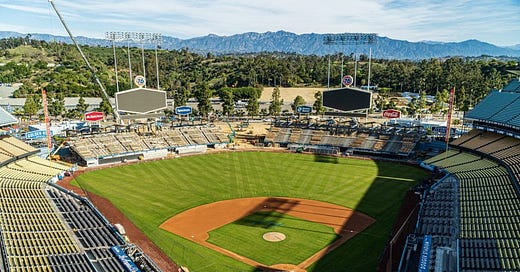Sports Stadiums Should Connect Us To Our Community. Do They?
As the "nationalization of the sportscape" continues, maybe we need to re-think the idea pouring billions into stadiums in order to keep our teams local.
After writing the other day about the nationalization of the “sportscape,” I began thinking stadiums. Even as fan bases are becoming nationalized, cities are pouring more money than ever into stadiums in order to keep their sports teams in town.
The stadium subsidy trend ebbs and flows – a few years ago it seemed to be going away – but there appears to be a comeback, especially for football stadiums. Tennessee is putting a huge pot of money into a new stadium for the NFL Titans. Buffalo and Erie County are putting up almost $1 billion for a new stadium for the Bills. In Kansas City, the existing sports complex for the Royals and the Chiefs – two stadiums surrounded by a frightening amount of parking – will apparently be replaced by stadiums in different locations, probably with at least some public financing from two different states.
But what, exactly, does this accomplish?
There’s a load of evidence that heavily subsidized new stadiums don’t pay for themselves, although inevitably some economic consulting firm is hired to prove otherwise. So it’s not really about economic development.
The Top Deck at Dodger Stadium with a view of the hills and mountains.
And, weirdly, even as football stadiums in particular become fancier and more luxurious, they seem to be more and more disconnected from the communities around them, both physically and, one might say, emotionally.
At its best, a stadium can connect you with the community and the local surroundings. There are two ways to do this: By connecting the experience of being in the stadium with the surrounding physical environment and by embedding the stadium in a downtown or other activity center with many other things to do.




